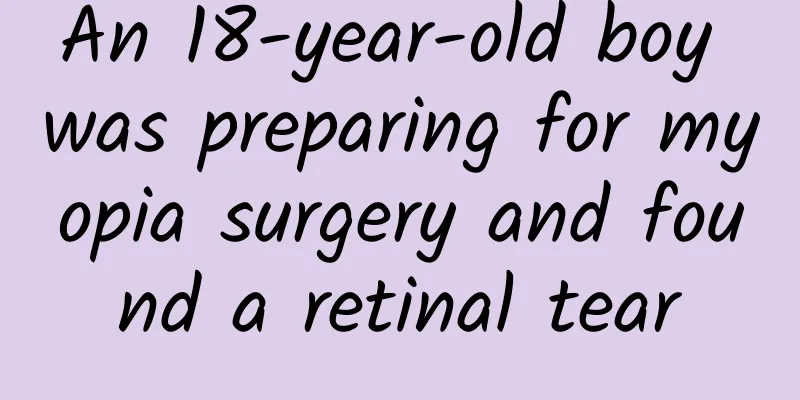Areola pain is caused by these reasons

|
Areola pain is the most common problem encountered during breastfeeding. Nowadays, breastfeeding mothers are always afraid of trouble, so they feed their children directly with the nipples. This will cause the areola to be held in the baby's mouth for a long time and rubbed, causing skin damage and making the skin very sensitive. In severe cases, it may also become deformed due to pulling and biting. Therefore, areola pain is caused by this reason. As long as everyone takes good care of it in daily life, it will be fine. Breast engorgement may also cause nipple pain The breasts may become too full at this point, making it difficult for your baby to latch on, and even if he does, his latch may be very shallow. If the problem is the way your baby is latching on, you'll probably see a noticeable change in the shape of the nipple after he spits it out -- it may look wrinkled, have a white mark, or be flat on one side. Nipple blistering, mastitis, tongue tie, and thrush can all cause nipple pain. Less common causes of nipple pain include skin conditions like eczema. Unlike latch problems, these unpleasant skin conditions can cause nipple pain even if your nipples don't become misshapen or flattened when they come out of your baby's mouth. If your nipples are deformed, you can try to let your baby correct this problem by breastfeeding in a semi-recumbent position. Perhaps you could spend a day or half a day in bed, allowing your baby to practice latching in a relaxed state. If your nipples are still deformed, look for a tongue tie underneath your baby's tongue. Here are some tips to relieve nipple pain. Try hand expressing a little milk after a feeding and letting it dry on your nipple. The anti-inflammatory and antibacterial properties of your breast milk can heal not only nipple wounds, but also skin and even eye infections. Pure lanolin is to your nipples what lip balm is to your lips. It helps keep the cells themselves moisturized and intact. A healthy nipple does not need to be oiled, but if your nipples are chapped or slightly damaged, a thin layer of pure lanolin can keep the newly formed cells moisturized, lubricate the damaged area, and heal the cracks as soon as possible. This nourishing method of wound healing is quite effective, but it requires that you first address the cause of the pain. Like any skin wound, a wound on the nipple is a potential entry point for bacteria and needs to be kept clean. Healthy nipples do not need to be cleaned at all. But it's reasonable to wash damaged nipples several times a day with mild soap and water. The hydrogel pads are specially designed for nipples. They feel cool and comfortable when applied to the nipples and will not stick to the wounds. They can maintain the moisture balance of the nipples while protecting them from impact or kicking by the baby. Over-the-counter antibiotic creams adhere better than creams and are less irritating while protecting your breasts from infection. If you use it two or three times a day after feedings, applying an imperceptible amount each time, it will have been absorbed by the time your baby feeds again and there will be no need to wash it off. One way to keep the ointment moist on the nipples and promote wound healing is to cover the nipples with a protective film after applying the ointment. The hard plastic dome of nipple shields was originally designed to help flat or inverted nipples stand out, but this function has now been replaced by newer suction devices. If your nipples are very sore, these domes can act as armor, but they also tend to trap moisture from the outside, slowing healing. Even if you like using nipple shields, avoid wearing them at night as they can slip out of their place and cause further damage to your nipples. Nipple shields should be cleaned and dried regularly to ensure that they do not breed bacteria. You can use them while feeding to prevent your baby from kicking your sore nipples, but to speed healing, avoid wearing them if possible. |
<<: Areola reduction surgery is only suitable for these groups
>>: What causes itchy nipples and areolas?
Recommend
Is it easier to get pregnant with an anteverted uterus?
The uterus is divided into anterior uterus and po...
Can washing feet with mugwort leaves cure postpartum diseases?
If women do not take proper care of themselves du...
Does the initial redness of the hard lower abdomen itch?
I recently had a small bump on both sides of my l...
What are the changes in hcg values during biochemical pregnancy?
What is a biochemical pregnancy? A biochemical pr...
Medicines for irregular menstruation
Many female friends will experience symptoms of i...
What happens when the nipple squeezes out water?
Many women are tempted by the water squeezed out ...
What vegetables are good for pregnant women with anemia?
It is common for pregnant women to experience ane...
What should little girls pay attention to when they have their first menstruation?
Normal girls have their periods at the age of 13-...
JakPat: 90% of Indonesian mobile Internet users aged 16 to 35 visit Facebook
199IT original compilation According to JakPat da...
How long does it take to perform an abortion surgery?
The accelerated pace of modern life has led to a ...
What causes accessory breast pain? The answer turned out to be this
Many people will not feel pain after having acces...
The prevalence rate among people over 40 years old is 8.2%. Are you one of them?
Author: Lin Jiangtao, Chief Physician of China-Ja...
Can antiphospholipid antibody positive be cured?
Key reminder: Anti-cardiomyopathy antibodies usua...
How to treat excessive leucorrhea?
Most women are troubled by some gynecological dis...
Taking care of the kidneys means taking care of your life! Here are the treatments for the three major kidney diseases
In traditional Chinese medicine, the kidneys incl...









